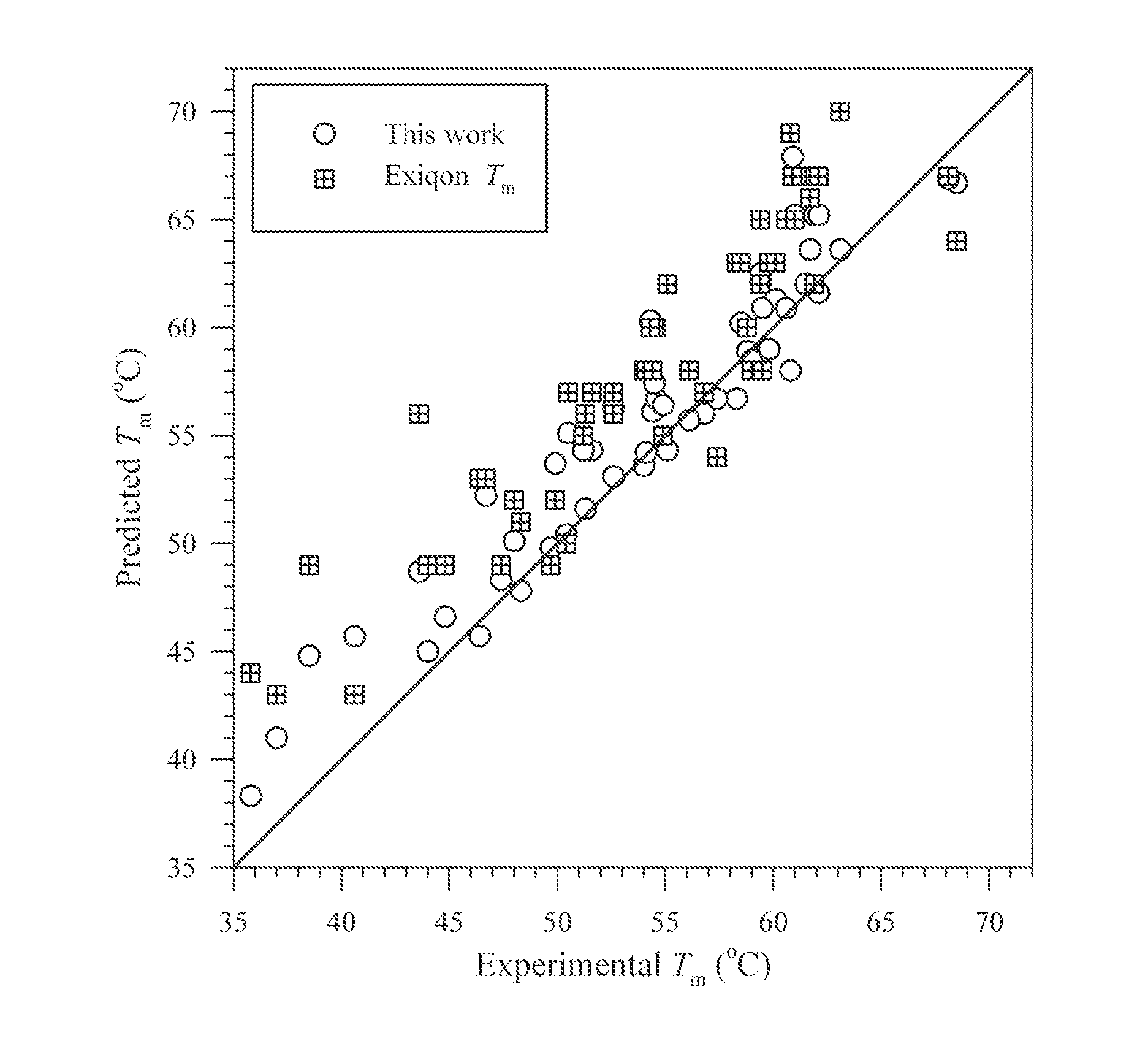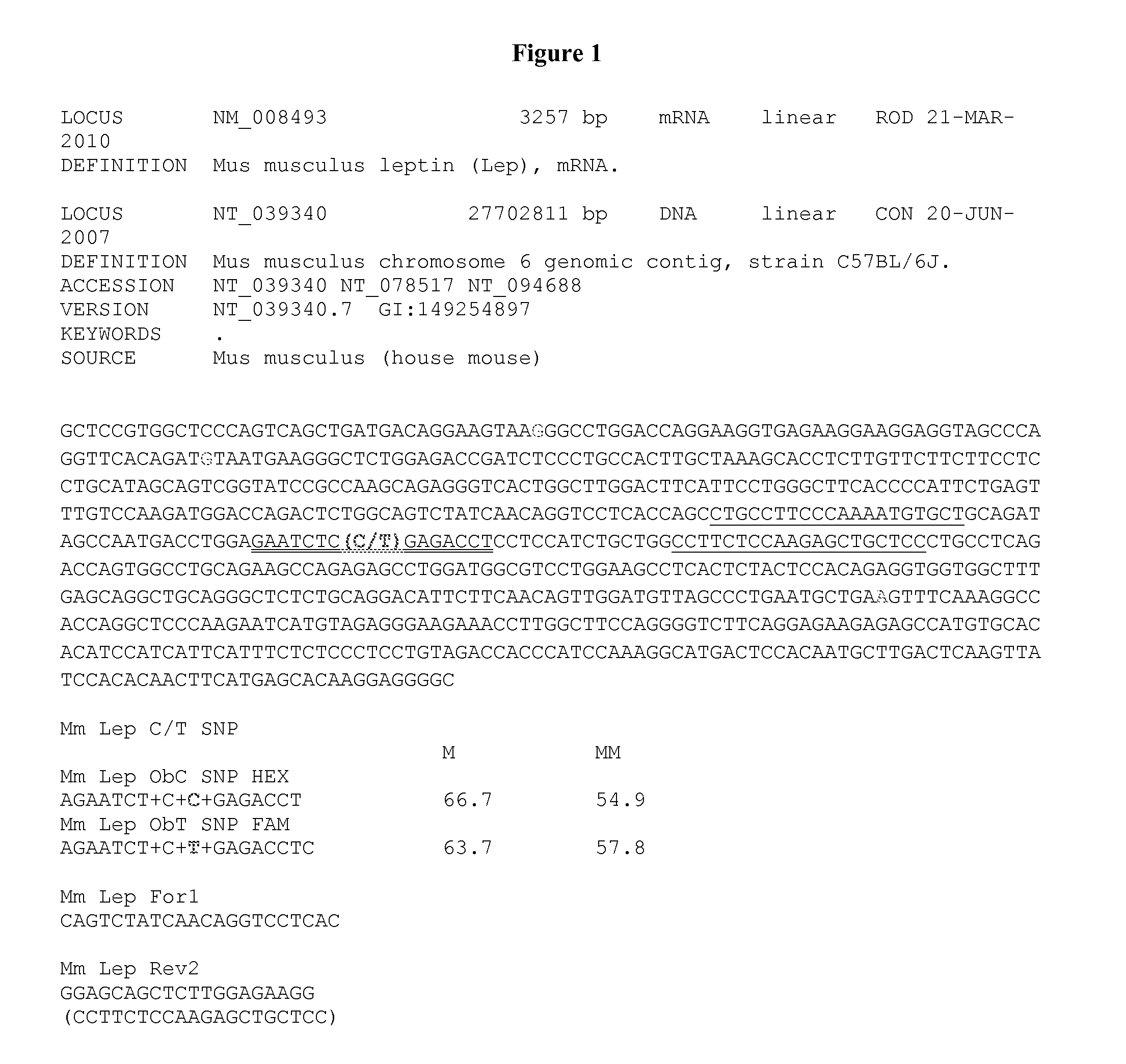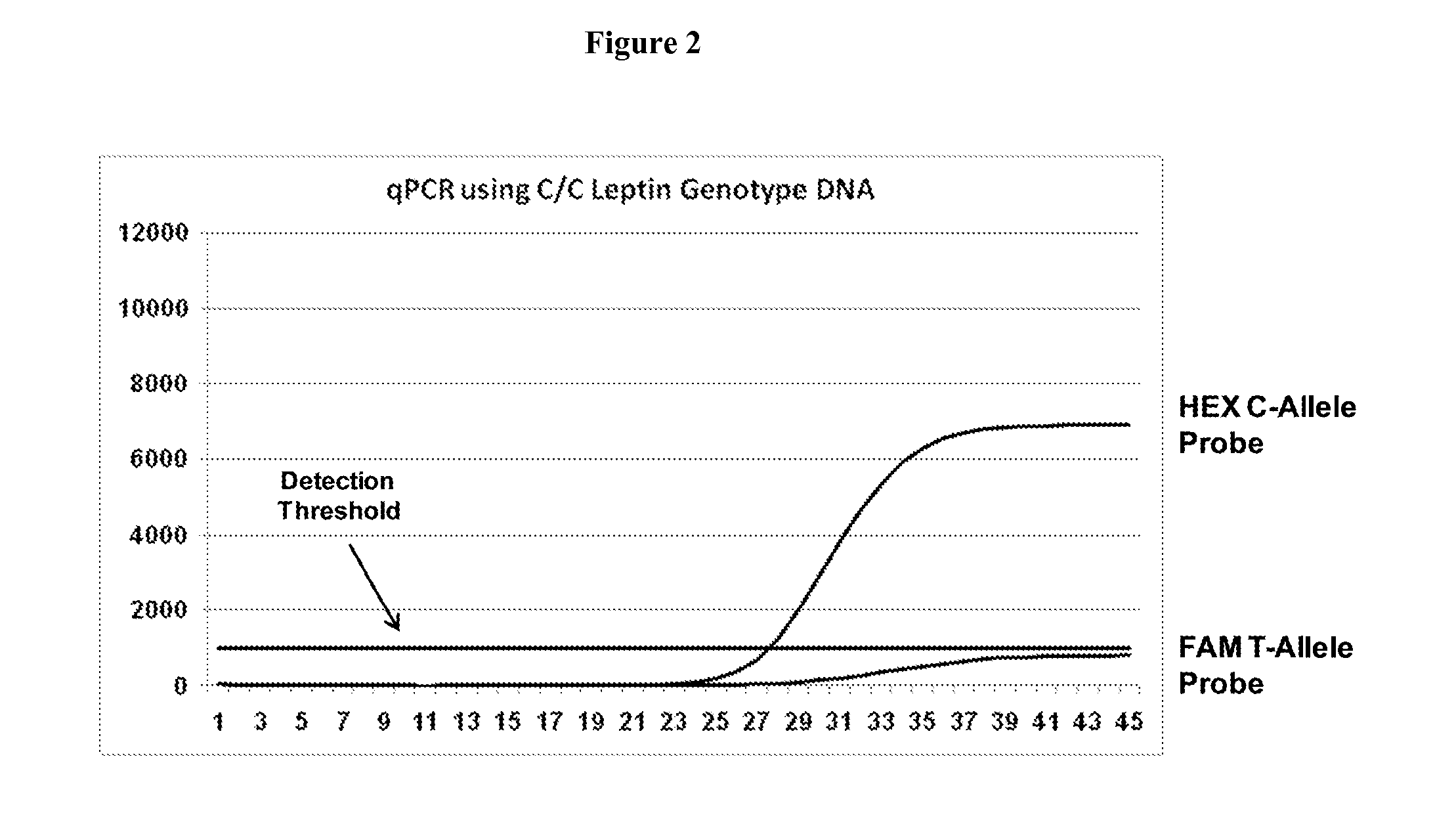Methods for Predicting Stability and Melting Temperatures of Nucleic Acid Duplexes
a nucleic acid duplex and stability prediction technology, applied in the field of new thermodynamic parameters, can solve the problem of rare and good results, and achieve the effect of accurate prediction of melting temperatures
- Summary
- Abstract
- Description
- Claims
- Application Information
AI Technical Summary
Benefits of technology
Problems solved by technology
Method used
Image
Examples
example 1
[0058]This example demonstrates use of the invention in a systematic melting study of 53 oligonucleotides that contain two consecutive LNA modifications. These LNA duplexes ranged from 8 to 10 base pairs in lengths, from 10% to 88% in G·C contents and from 20% to 60% in LNA contents. The oligonucleotides did not have any fluorescent labels or quenchers attached. Melting profiles of these DNA duplexes were experimentally measured in 1M Na+ solution.
[0059]DNA and LNA oligomers were synthesized on solid supports using phosphoramidite chemistry and purified using high-pressure liquid chromatography or polyacrylamide gel electrophoresis. Published procedures were followed (Moreira et al., 2005, Biochem. Biophys. Res. Commun. 327: 473-84; Owczarzy et al., 2004). The capillary electrophoresis assay carried out on Beckman PACE 5000 system indicated that all oligomers were more than 90% pure. Molar masses of oligomers were determined on ESI-LCMS Oligo HTCS system. Experimental molar masses o...
example 2
[0062]One embodiment of the invention is also shown for LNA oligonucleotides that hybridize to DNA oligonucleotides that are not perfectly complementary. Those oligonucleotides form LNA-DNA duplexes containing mismatched base pairs. We have studied a set of 7 unique base sequences. Unmodified DNA oligonucleotides and LNA modified oligonucleotides of the same base sequence were synthesized and their melting temperatures were measured. Experimental procedures that are reported in Example 1 were followed to obtain experimental melting temperatures. Various mismatches (C-A, G-T, A-C, C-C, A-G, T-C) were introduced in the middle of three consecutive LNA nucleotides. Table 6 shows experimentally measured and predicted melting temperatures. LNA modifications were predicted to have negative impact on mismatch discrimination, ΔTm (° C.), for the first two sequences (VAL-A and VAL-B). Mismatch discrimination in the next two sequences (Val-C and VAL-D) was predicted to be negligibly influenced...
example 3
[0063]The present Example demonstrates shows use of the methods of the present invention to design LNA-modified fluorescence-quenched oligonucleotide probes to distinguish single nucleotide polymorphisms (SNPs) using the 5′-nuclease assay in qPCR, specifically the use of the probe design method of the present invention to distinguish between a “C” allele vs. a “T” allele in the mouse Leptin gene (GenBank Acc. No. NM—008493). The sequence of the mouse Leptin gene is shown below spanning the site of the C / T SNP of interest. Binding sites for the forward primer, reverse primer, and probes are underlined. The site of the SNP is indicated (C / T).
CACCAGCCTGCCTTCCCAAAATGTGCTGCAGATAGCCAATGACCTGGAGAATCTC(C / T)GAGACCTCCTCCATCTGCTGGCCTTCTCCAAGAGCTGCTCCCTG
[0064]Primers were design to amplify this locus using standard design criteria, as are well known to those with skill in the art. The forward and reverse primers flank the SNP site as indicated above. Probe oligonucleotides had LNA bases placed ...
PUM
| Property | Measurement | Unit |
|---|---|---|
| melting temperature | aaaaa | aaaaa |
| Tm | aaaaa | aaaaa |
| stability | aaaaa | aaaaa |
Abstract
Description
Claims
Application Information
 Login to View More
Login to View More - R&D
- Intellectual Property
- Life Sciences
- Materials
- Tech Scout
- Unparalleled Data Quality
- Higher Quality Content
- 60% Fewer Hallucinations
Browse by: Latest US Patents, China's latest patents, Technical Efficacy Thesaurus, Application Domain, Technology Topic, Popular Technical Reports.
© 2025 PatSnap. All rights reserved.Legal|Privacy policy|Modern Slavery Act Transparency Statement|Sitemap|About US| Contact US: help@patsnap.com



